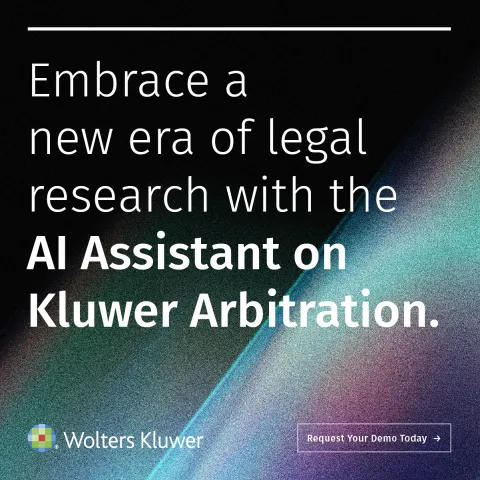Mediation in Motion – Reflections on the Inaugural Issue of the AAA Mediation Magazine
November 24, 2025
If the first issue of the AAA Mediation Magazine were a room, it would be full of energy — mediators comparing notes, arguing gently about process design, and sharing stories from practice.
The collection of articles in this inaugural edition is impressively diverse: from early dispute resolution to self-represented parties, construction disputes, multi-party mediation, AI in practice, and mediator certification. Together, they reflect a discipline that is restless, experimental, and forward-looking.
Below are reflections on several of these pieces — not as summaries, but as an editorial conversation with the ideas they raise for the international mediation community.
Reframing the Conversation: Peter Silverman and the EDR Protocols
Peter Silverman’s article, The EDR Protocols: Mediation Transformed, is a manifesto for bringing dispute resolution forward in time.
Silverman draws on the work of the Early Dispute Resolution Institute, arguing that mediation should no longer be treated as a last-minute concession but as an integral part of organisational governance. The protocols he outlines invite businesses to view mediation as part of their risk-management DNA.
For international practitioners, the idea feels familiar. In Singapore, the UK, and across the Gulf states, similar initiatives are embedding “facilitation stages” in major contracts. The goal is the same: prevent conflict from ossifying into dispute.
Silverman’s challenge is cultural as much as procedural. To make EDR work, counsel must be willing to collaborate before the gloves come off.
The question for all of us: can mediation evolve from a reactive service to a proactive strategy — a design principle for sustainable relationships?
Access and Equity: Lori Sanford on Self-Represented Parties
Lori Sanford’s thoughtful piece, Providing Self-Represented Parties with an Outline for Pre-Mediation Statements, tackles a quiet revolution in mediation — the increasing presence of parties without lawyers.
Her proposed template for pre-mediation statements is deceptively simple but equally empowering. It turns process anxiety into structure, helping unrepresented parties articulate issues and interests with confidence.
The broader message is clear: access to mediation must include access to understanding. Across jurisdictions, from online consumer platforms to small claims courts, mediation’s credibility will increasingly depend on how inclusive it is.
This raises a global question: should mediation institutions develop common accessibility standards — or would that risk imposing cultural uniformity on a process defined by flexibility?
Keeping the Cranes Moving: Brenda Radmacher on Construction Mediation
Brenda Radmacher’s Building Resolution: How Mediation Can Effectively Resolve Construction Disputes takes readers into one of the most complex mediation environments: the construction industry.
Her message is pragmatic and compelling. Construction mediation works best when it is embedded early — ideally before claims crystallise — because relationships, cash flow, and project momentum depend on dialogue, not deadlock.
Around the world, the same insight drives dispute avoidance boards and standing neutrals. In the UAE project facilitation models are gaining traction and in the UK the 2022 Construction Playbook is evidence of convergence.
Radmacher’s article reminds us that mediation is not simply about dispute resolution — it is about keeping projects, and partnerships, alive.
It prompts this reflection: could mediation or early neutral facilitation, if institutionalised in project delivery frameworks, become as essential to construction governance as safety audits and design reviews?
The Art of the Many: Steven Kaplan on Multi-Party Mediation
Steven Kaplan’s Multi-Party Mediation: The More Parties the Merrier? deals with complexity of a different kind — not technical, but relational.
Kaplan captures the mediator’s dilemma when multiple stakeholders, interests, and personalities converge. Neutrality becomes choreography; fairness becomes fluid.
In many ways, his reflections mirror global experience — from Indigenous land dialogues in Canada to climate-related multi-stakeholder processes in Europe and Asia. As disputes increasingly involve networks rather than dyads, Kaplan’s analysis feels prescient.
His work leaves us asking: as disputes become systems problems, do mediators need new tools — or simply a renewed commitment to listening at scale?
AI and the Mediator’s Mind: Schmitz & Froehlich on Technology
In medAItion, Amy Schmitz and William Froehlich explore what happens when artificial intelligence enters the mediator’s toolkit. Their tone is pragmatic, not utopian. AI can assist in preparation, summarisation, and organisation — but the mediator’s human touch remains irreplaceable.
For practitioners outside the U.S., this conversation is not futuristic; it is already here. From court-connected online platforms in China to private ODR pilots in the EU, mediators are experimenting with technology as co-pilot.
Still, a caution lingers: as AI learns from human inputs, who owns the data — and how do we protect the confidentiality that underpins trust?
Mediation thrives on presence and empathy. The challenge ahead is ensuring technology augments those qualities rather than diluting them.
Standards and Identity: Mattie Robertson on Mediator Certification
Finally, Mattie Robertson’s Mediation Aspects of SB 940 in California revisits an enduring tension: how to professionalise mediation without constraining its diversity.
Her discussion of California’s Senate Bill 940 — which proposes state-wide mediator certification — highlights the promise of standards and the perils of bureaucracy.
Across the globe, similar debates are playing out. Singapore’s certification regime, Nigeria’s new Arbitration and Mediation Act 2023, and the EU’s continuing discussions all reflect a shared desire for credibility coupled with a fear of over-regulation.
Robertson’s nuanced approach invites reflection: is mediation ready to define “professionalism” in its own image, rather than borrow it from law or psychology?
Closing thoughts
The first issue of Mediation Magazine reads like a microcosm of mediation’s evolution. It is practical, curious, and unafraid of complexity.
Each contribution adds a tile to a larger mosaic:
- Early engagement through EDR;
- Inclusion and accessibility for all parties;
- Sector-specific innovation in construction and infrastructure;
- Process adaptation for multi-stakeholder disputes;
- Technological integration; and
- Professional identity through certification.
Together, these themes suggest that mediation is no longer merely responding to change — it is shaping it.
For the international mediation community, the question now is not whether mediation has arrived, but how we sustain its momentum. How do we balance flexibility with legitimacy, innovation with ethics, local context with global coherence?
The AAA’s Mediation Magazine does not pretend to answer these questions. What it does — and does well — is create a forum where they can be asked.
That is why this collaboration with the Kluwer Mediation Blog matters. It ensures that the dialogue does not end at national borders but continues across them — connecting practitioners, institutions, and ideas in the shared pursuit of a more collaborative world.
If the first issue is any indication, Mediation Magazine will become a cornerstone of that conversation — and one more sign that mediation’s future is not just bright but interconnected.
You may also like







